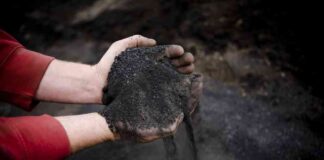Alright, so here we have this new rulebook from the Carbon registry Verra, which is all about creating carbon credits from shutting down coal power plants early and replacing them with cleaner energy sources. Sounds pretty cool, right? The idea behind this is to monetize the emissions avoided by getting rid of these coal plants before their time. This way, the owners of these plants can make some money to make up for what they would have earned by keeping the plants running and selling electricity.
The Rockefeller Foundation, a US-based philanthropy, is the brain behind this rulebook. They hope to get around 60 coal power plants on board with this scheme by 2030. Joseph Curtin, from The Rockefeller Foundation, seems pretty excited about the whole thing, saying they are getting closer to bringing new benefits to people through these credits that will help communities switch to cleaner and more affordable energy. Sounds like a win-win situation, right?
Now, some experts are a bit skeptical about using carbon markets to fund the transition from coal. They’re not really sure if the carbon credits generated through this methodology are legit or not. The thing is, project developers don’t have to replace all the coal-power generating capacity that’s being retired. They can switch to biomass instead, which some people think is not great for the environment. Will O’Sullivan from E3G thinks that while offsets may help phase out coal globally by 2040, they’re not the ultimate solution to the problem. He also points out that this methodology doesn’t fully address the issue of predicting future emissions accurately.
The supporters of this scheme are all about making sure that people affected by the switch from coal power are taken care of. Mandy Rambharos, the CEO of Verra and ex-Eskom employee, believes that this methodology empowers energy providers to make the shift without leaving workers or communities behind. Project developers will have to come up with a plan for a “just transition” that details how coal workers will be compensated or offered new job opportunities. But here’s the catch – the money for this won’t be coming from the carbon market. Developers will have to find other funders like governments, philanthropies, or banks to provide grants or loans.
Overall, the idea is to get rid of coal power plants by 2040 to meet the Paris Agreement goals. Some countries like Indonesia, Vietnam, and South Africa are trying to make the switch to cleaner energy sources through partnerships with richer nations. However, these programs have faced challenges, with the US even pulling out of support in 2025. The use of carbon credits to fund the retirement of coal plants has been debated by environmental groups who worry about the uncertainties in emission reduction calculations.
Verra’s new methodology targets grid-connected coal power plants that started construction before 2021. These plants need to be locked into a long-term electricity purchase agreement. The projects will have to replace at least 40% of the displaced generating capacity with renewable energy sources like solar, wind, hydro, or biomass. While biomass can produce more CO2 emissions than coal, the methodology aims to ensure that renewables directly replace lost coal capacity. The Rockefeller Foundation is already working on a pilot project in the Philippines to shut down a coal power plant and replace it with solar and wind power. Sounds like a step in the right direction towards a cleaner future!














